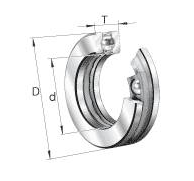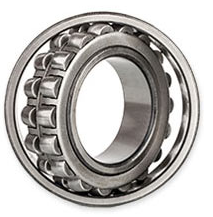Ball Bearings: Cost-Effective Quality
Leave a CommentThroughout the years, ball and roller bearings have seen significant reductions in price while quality has improved. Several factors have played a role in this, but production process changes and material quality improvements have most significantly changed the face of the industry.
Higher Quality, Lower Prices
 Prior to universal quality standards, the production process for ball bearings was frequently subpar; surface defects would occur due to issues in the steelmaking and rolling processes. Steel would often contain high amounts of non-metallic inclusions, disrupting the structure of the steel. Rolling defects were caused by various circumstances, such as poor-quality input billets. Inspection processes were often not sufficiently thorough. But since the introduction of industry-wide regulations and improved quality assurance processes, the ball bearing production process has seen major improvements, and products are of much higher quality.
Prior to universal quality standards, the production process for ball bearings was frequently subpar; surface defects would occur due to issues in the steelmaking and rolling processes. Steel would often contain high amounts of non-metallic inclusions, disrupting the structure of the steel. Rolling defects were caused by various circumstances, such as poor-quality input billets. Inspection processes were often not sufficiently thorough. But since the introduction of industry-wide regulations and improved quality assurance processes, the ball bearing production process has seen major improvements, and products are of much higher quality.
The advent of universal bearing grades and quality standards has also played a major role in improving the overall value of bearing products. Prior to the Industrial Revolution, for instance, before the introduction of standard specifications and guidelines, manufacturers employed their own testing procedures and quality standards. With each mill following its own guidelines, product uniformity was hard to achieve and quality varied greatly.
Today, two main standards serve as the benchmark for ball bearing quality; steel balls are manufactured to the precision requirements set forth by ANSI/ABMA Standard 10A, while ceramic balls adhere to standard ASTM F2094. Manufactured under these standards, balls have to meet specified limits for ball diameter, roughness, and spherical form.
With more uniform quality across the industry, purchasing and procuring agents can now easily obtain reliable, quality ball bearings at competitive, cost-efficient prices. Cheap ball bearings no longer mean poor-quality ball bearings.
Quality Control at Action Bearing
At Action Bearing, we take pride in supplying top-quality ball bearings for a wide range of industries, and we only carry products that adhere to strict industry guidelines. The bearing manufacturers we partner with ensure optimal product quality through rigorous physical testing, which is repeated with every change in design, material, or finish.
For over 50 years, we’ve been providing OEM and maintenance markets worldwide with the highest quality ball and roller bearings available. To learn more about our selection of ball bearings, or to discuss the advantages of using ball bearings in your next project, contact the team today.

 Please visit Emersonbearing.com for our latest blogs and updates!
Please visit Emersonbearing.com for our latest blogs and updates!
